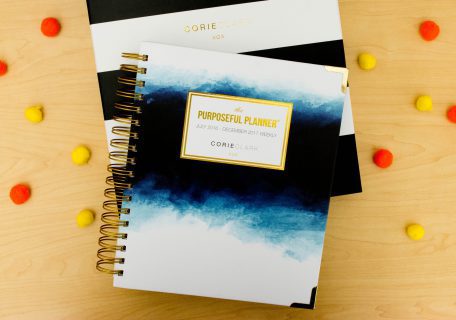5 Tips for Getting the Most Out of Your Planner

I know that I’m not exactly normal when it comes to planners—mine is one of my most prized possessions—but that means I know how to make the paper planner work for the digital age. Trust me, it can work. If you’re new to the world of planners or simply need some advice for making yours more effective, then let me guide you to Elysium, where planners and organization abound.
1. Be consistent.
The biggest mistake people make when using planners is not being consistent. A planner can only work if you maintain it and continuously update it. It can’t contain information that you don’t write down. I find the best way for me to remain consistent is to have it with me at all times. I carry my planner with me to work, and keep it in my car when I’m out and about. Not having my planner with me leads to forgetting important times and dates I need to write down. I also fill out my planner for the coming week each Sunday and go over it every morning so I know what to expect.
If you aren’t consistent with the details of your planner, then the chances of it serving you well and providing you with a sense of preparedness are pretty much slim to none. I’ve learned the hard way just how important this is. If I don’t write something down in my planner, then I’m going to forget about it, and it won’t get done. Learn from my mistake and be diligent with your planner. Otherwise, you’re just cutting off your nose to spite your face.
2. Use a good pen.
This is a small, but important part of using a planner. If you’re anything like me, then a motley of different colors and styles of pen strokes will drive you absolutely batty. A mix of blue and black pens makes me feel scattered and unsure of what to do first. Even a combination of thick and thin ink can bother me.
If this sounds at all familiar, you may need a designated planner pen. I’m strict about this. I currently use the Day Designer flagship planner, and the Pilot G-2 pens are the only kind I permit to touch the hallowed paper. When I used an Erin Condren planner, I was committed to using the brightly colored Papermate felt-tip pens so I could color code.
3. Create a system.
Sometimes a planner isn’t as organized as you need it to be. This is when you have to create a system for your planner that works well for you. To do this, consider color coding, creating a legend to abide by, a schedule for filling out your planner, and your approach to using the planner. You might want to have it in eyesight throughout your work day (like me) or just glance at it as needed. Test out a few different methods so you know exactly what works best for your needs.
To start the process of creating a system, jot down exactly what you want from your planner. Do you want a place to write down the random things that you need to do and places you need to be for a whole week? Do you want a clear-cut visual of exactly what each day will involve?
Take time to fully think about what you want and need from a planner, then consider what aspects and habits will help you satisfy those wants and needs. Color coding might be what you need to feel more organized and on top of things. A specific schedule could reduce your risk of forgetting appointments. Be honest and realistic about what kind of system will help you and if you can maintain that kind of system.
4. Don’t be cheap.
Now I don’t mean to say that a cheaper planner from Target can’t add value and organization to your life, because it absolutely can. However, you need to find a quality planner at a price point you’re comfortable with. I’m a devoted Day Designer customer and believe it’s worth it to spend $60 on a planner I’ll love all year long.
In my experience, the more expensive planners offer benefits you simply can’t get from cheaper planners. For example, the quality of the materials and construction is always reliable, so your planner won’t fall about halfway through the year. The layouts within the planners are more impressive (in my opinion), and there are typically helpful bonus features that the lower-tier planners simply don’t have.
5. Clean it up.
Things change. Plans are rescheduled. Tasks can become pointless. At some point, the items written in your planner will need to be changed and updated. While it’s completely appropriate to rewrite appointments and task in your planner and keep the whole thing updated, having a ton of crossed-out or scribbled-over words will only stress you out. The best way to handle this is to keep some whiteout handy to cover the old information and then write down the new information.
I’m a firm believer that a clean, clear planner leads to a clean, clear life. How can you expect to think properly and prioritize your tasks if you can’t even read your planner without a struggle? You shouldn’t feel like you’re trying to decipher ancient Egyptian hieroglyphics when you look at your planner. Keep it tidy and you’ll be a much more efficient person.
Follow Terra on Instagram: @terrabrown3
Last modified on January 3rd, 2024






Show Comments +